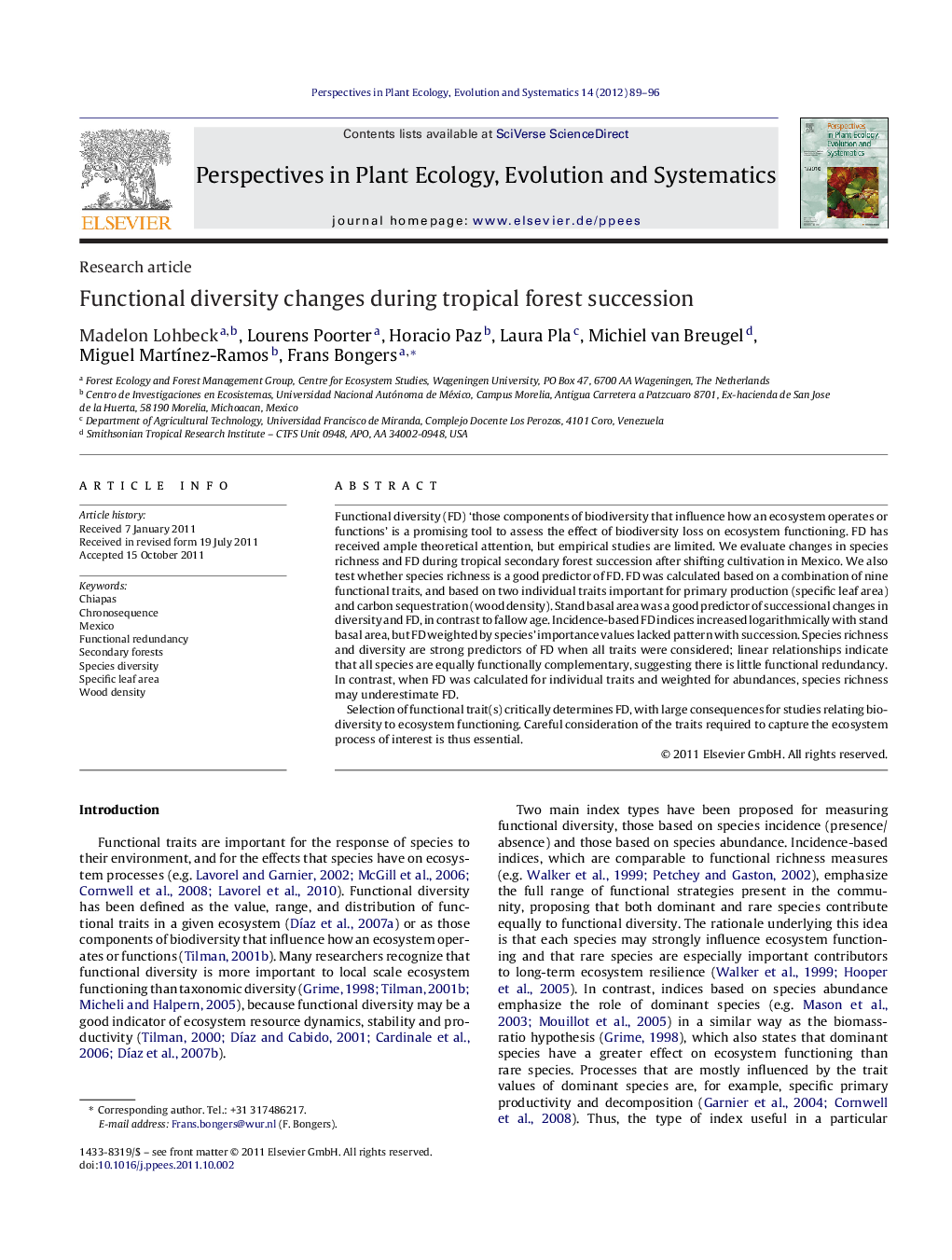| کد مقاله | کد نشریه | سال انتشار | مقاله انگلیسی | نسخه تمام متن |
|---|---|---|---|---|
| 4401141 | 1307061 | 2012 | 8 صفحه PDF | دانلود رایگان |

Functional diversity (FD) ‘those components of biodiversity that influence how an ecosystem operates or functions’ is a promising tool to assess the effect of biodiversity loss on ecosystem functioning. FD has received ample theoretical attention, but empirical studies are limited. We evaluate changes in species richness and FD during tropical secondary forest succession after shifting cultivation in Mexico. We also test whether species richness is a good predictor of FD. FD was calculated based on a combination of nine functional traits, and based on two individual traits important for primary production (specific leaf area) and carbon sequestration (wood density). Stand basal area was a good predictor of successional changes in diversity and FD, in contrast to fallow age. Incidence-based FD indices increased logarithmically with stand basal area, but FD weighted by species’ importance values lacked pattern with succession. Species richness and diversity are strong predictors of FD when all traits were considered; linear relationships indicate that all species are equally functionally complementary, suggesting there is little functional redundancy. In contrast, when FD was calculated for individual traits and weighted for abundances, species richness may underestimate FD.Selection of functional trait(s) critically determines FD, with large consequences for studies relating biodiversity to ecosystem functioning. Careful consideration of the traits required to capture the ecosystem process of interest is thus essential.
Journal: Perspectives in Plant Ecology, Evolution and Systematics - Volume 14, Issue 2, 20 April 2012, Pages 89–96